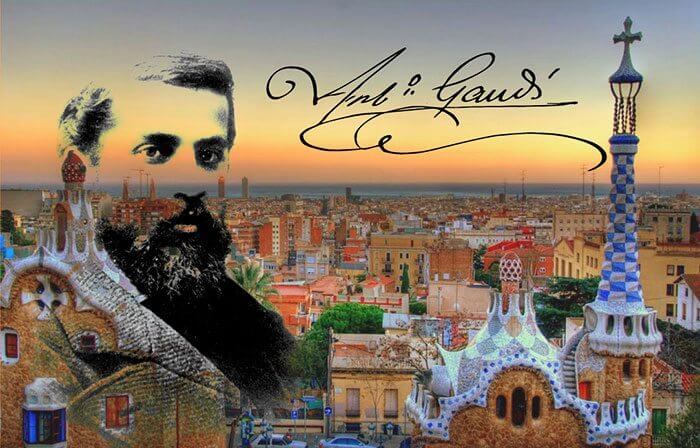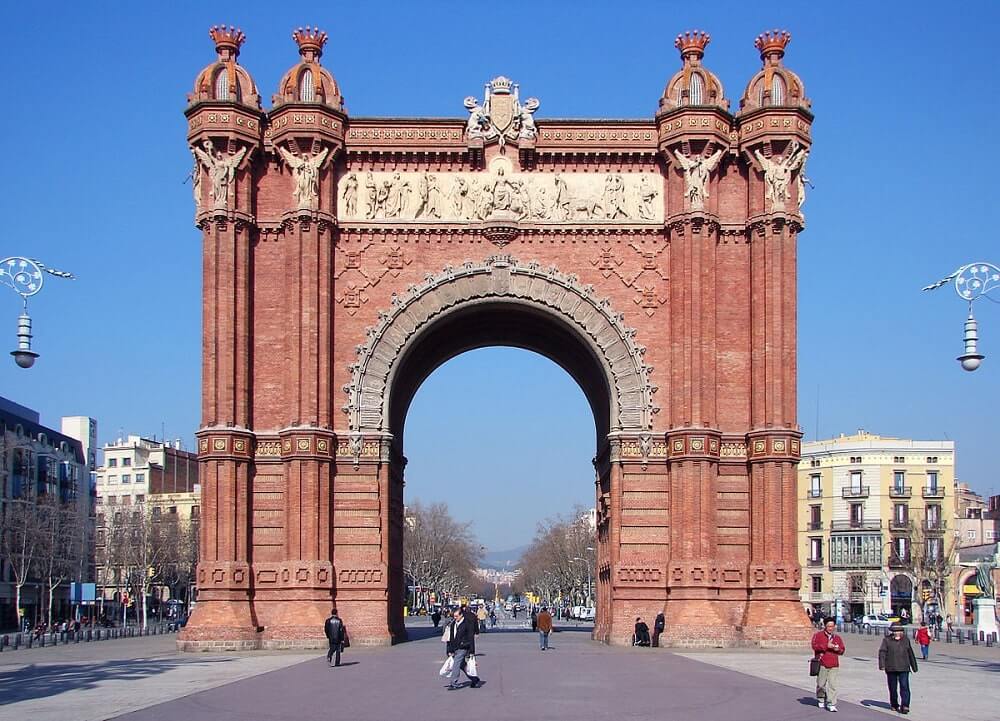
Barcelona’s central square, Plaça de Catalunya, is an adornment of the city, with two parts of the city – old and new. Due to its location, the square is always crowded, with a lot of traffic going through it. From here you can reach the Gothic Quarter, Passage de Gracia or Rambla street. There are 9 streets leading to the square, which is located at the junction of the new Eixample quarter and the Old Town. Only a hundred years ago, it was a countryside area, and now represents 50,000 m2 of completely flat open space with a variety of sculptures, fountains and numerous attractions. It hosts exhibitions and festivals and is the starting point of many tourist routes.
The history of creation
Previously, the area dedicated to Plaça de Catalunya was outside the city, but in 1858, the government decided to improve the area and expand it. Then demolished the walls around it and began construction of the square on a competitive basis. The government chose the sketches for the future square by architect Ildephonse Kerd, but over time, other city architects’ ideas have also come to fruition. According to Kerd’s plan, it began to resemble the sun with its rays – the streets, each of which leads to its own amazing neighborhood.
The area was unrecognizably transformed for the 1888 World’s Fair, and then its architecture was supplemented to the next exhibition in 1929. One of the latest additions is the installation of an inverted staircase monument, which was created by architect Josep Subirax and decorated the square in 1991. Its installation is timed to the memory of the former president of Catalonia – Francesco Macija.
Barcelona’s main square has undergone a lot of changes, but most of the buildings on it were built under the Franco government and have elements of Gothic style. They have no architectural value, but they are striking in their massive size and the concentration of various shops, including the most expensive in the world, which is why Plaça de Catalunya is of great interest to tourists-shopaholics. Even an inexperienced shopper does not leave empty-handedly and buys a souvenir.
The main adornments of Plaça de Catalunya in Barcelona are the sculptures of Pablo Gargallo and Josep Lemona, which impress with its size and detail.
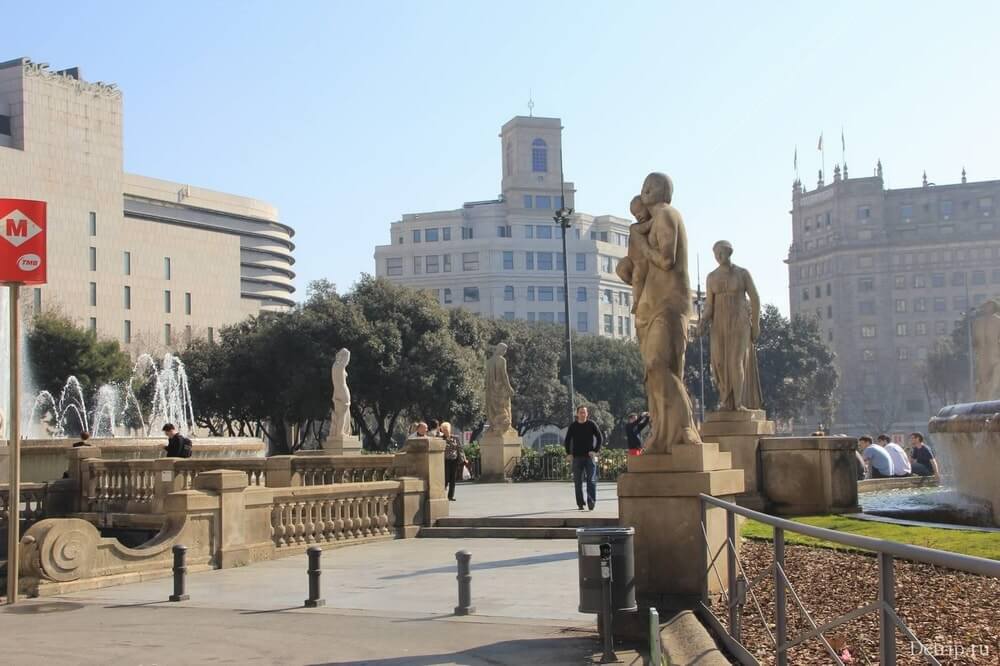
Attractions of the square
It is lined with granite and has a large fountain in its center, around which there are several sculptures. There are also several drinking fountains on the square that in the summer heat will be helpful from thirst. According to the local belief, those who drank from these fountains are guaranteed to return to Spain soon.
The lower level of the square is occupied by a large office for tourism in Catalonia, from which buses for various excursions in the city and its surroundings are started, as well as a transfer to the airport of Barcelona. If you want to visit Figueres or go to Mount Monserrat, you can go to this main office.
Along the square’s perimeter there are not only boutiques but also the Canadian consulate, the headquarters of many Spanish banks, the big shopping centers El Corte Ingles and FNAC, and the dream of football fans – the Barcelona club shop, where you can buy T-shirts and other things with portraits of famous Spanish footballers.
The square is the start of 9 streets, and you should use public transport by Bus Turistic to get there. It is the intersection of three metro lines and the main railway line. Not far from the square there are city beaches, which are especially valuable in the summer heat, when you can’t see the local sights anymore and want to enjoy the warm water. But in winter, the largest European skating rink operates in the square, so you won’t be bored with it.
When you’re in the square, you shouldn’t choose a chaotic route, take a place on the lawn right on the grass, as students and locals do and think about visiting the most amazing places.
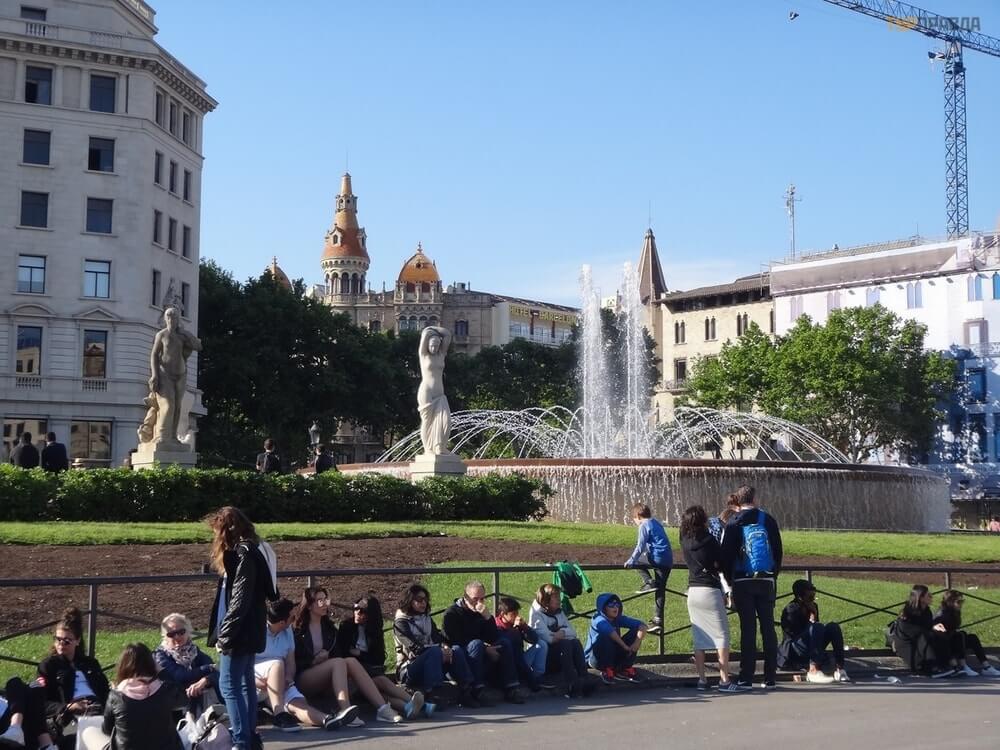
You can take wonderful photos at the fountain or one of the famous monuments, take a closer look at the buildings, made in the style of neo-classicism or modernism: Casa Damians was built of reinforced concrete was the first of all the other buildings, the house of Pich and Pon – was taken under the market.
The sidewalks around the square are decorated with mosaics, which are based on the drawings and sketches of the famous artist, a native of Spain – Joan Miró. The sculptures on it were made by Pau Gargallo, Lucia and Miguel Osle, Jouzen Clara.
In Plaça de Catalunya there are many restaurants famous for their Catalan and Spanish cuisine, the average check for one person in these establishments is 50 euros.
Tourists who came here at least two years ago observed a large number of pigeons in the square and took interesting photos against the background of these birds, but in the last year the authorities banned breeding and feeding these birds because of the threat to health standards.
The square is not only a place of rest and shopping, but also a place of rallies to express the discontent of a large number of locals, and if tourists agree with their demands, they can join the demonstration. But such demonstrations are rare, and the most common are the happy and joyful people who enjoy every minute in the country.
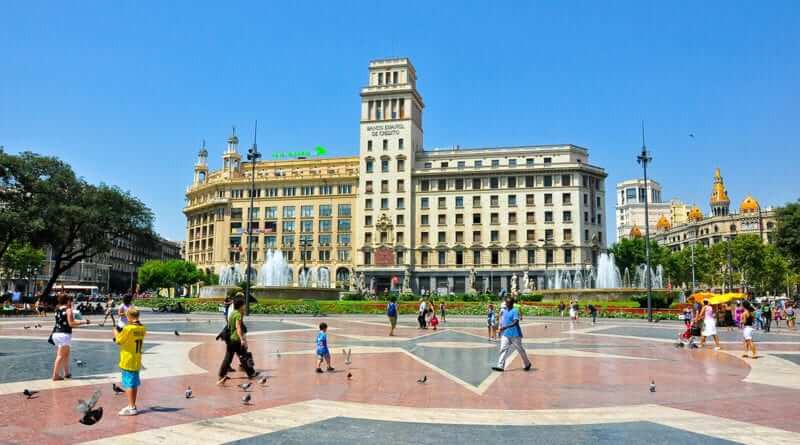
In the autumn, Plaça de Catalunya hosts the festival of Barcelona’s patroness La Merce, which is considered the most important festival for the locals. Since the end of the 90’s of the last century, this festival has been held with a special scope. Tourists can get acquainted with the Catalan dances right on the street, as well as see the delightful fireworks.
Famous places near the square
For tourists, not only the square itself is valuable, but also its rays – the streets, which on the map diverge from it in different directions. Their architectural content and interesting moments can be found on foot.
The Gothic Quarter starts just a few meters from the square, and next to it you can find the House of Batllo, which was built to the design of Gaudi, the facade of this building resembles the skin of a snake, it is all lined with scales.
On Passeig de Gracia street, which also starts in the square, there is a house in which there are no right angles – the House of Mila.
La Rambla street has a length of 1 km, and every time you visit it, more and more of its secrets are revealed to tourists. It ends with the largest aquarium in Europe.
How to get there?
There are several metro stations in the square, this is the fastest and most convenient way, so use the green line (L6 and L3) and get to Plaça de Catalunya station, if you use the metro line (L2 and L4) get to Passeig de Gràcia station.
There are many buses to the center of Barcelona and you can take one of them: 141, 68, 67, 66, 59, 58, 55, 42, 24, 16 and 9 – get to Plaça Catalunya stop, and if you take the numbers 9, 8, 7, 5, 3, 2 and 1, you have to get off on the Nitbus bus stop.
From the airport, the square is reached by airbus, which departs from T1 and T2. Bus number 17 runs to the square at night, with the nearest stops: Plaça Catalunya and Ronda Universitat. Or use the green metro line.
When you come to Barcelona, don’t forget the central part of the city, as the fascinating exploration of the city begins here. If you decide to visit Spain, it is better to plan your route in advance, and Plaça de Catalunya will be the starting point for unforgettable moments and unique photos.



